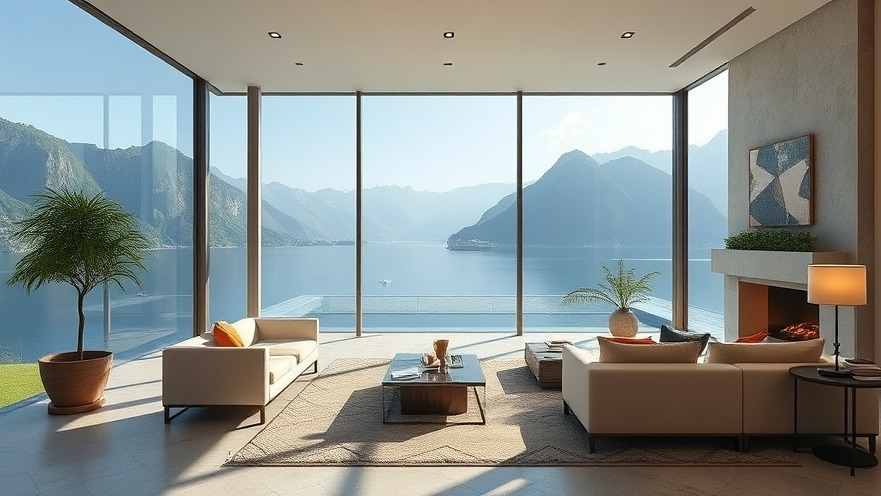
Reimagining Space: A Fresh Take on Remote Work Environments
For digital nomads, finding a balance between productivity and comfort is essential, especially when working from unique locations like the Lake Como Villa. Recently transformed by Tuckey Design Studio, this architectural marvel exemplifies how innovative design can create effective workspaces even in unconventional settings. The villa utilized an existing concrete ruin as a backdrop, allowing the designers to blend modern aesthetics with the character of the site.
Turning Constraints into Creativity
The challenge of working with abandoned structures can seem daunting. However, Tuckey Design Studio embraced the concrete shell of the villa, treating it as a "blank canvas." This perspective allows architects and designers to highlight the building’s existing features while creating functional spaces suitable for modern living and working. As remote workers, we can learn from this approach—rather than being limited by our environments, we should view them as opportunities for creativity.
Designing Comfort with Ergonomics in Mind
Notably, the villa features an open-plan kitchen and dining area, which serves not only as a functional workspace but also inspires collaboration and communication. Cozy nooks and well-placed furniture create an environment conducive to productivity. For remote workers, creating a comfortable workspace is paramount. Investing in ergonomic furniture can help reduce strain during long hours of work, echoing the emphasis on comfort present in the villa’s redesign.
Connection with Nature: A Vital Workspace Element
The integration of outdoor elements is another critical lesson from Lake Como Villa. With large windows and a terrace overlooking the lake, natural light floods the interior, providing an inspiring backdrop for work. This concept can be applied to remote workspaces by finding ways to incorporate nature, such as working near a window or adding plants to the environment. Fresh air and greenery help improve mood and productivity, making us more engaged in our work.
Finding the Right Color Palette for Your Workspace
Colors significantly influence our mood, as seen in Tuckey Design Studio’s selection of a color palette that draws from the lush green landscapes of Lombardy. Soft tones can evoke calmness while enhancing focus. Digital nomads should consider their workspace colors; lighter shades can help create a more spacious feel, while earthier tones can bring a sense of comfort.
Emphasizing Connection and Community
Ultimately, the new Lake Como home isn’t just about aesthetics; it represents a connection between the environment and its inhabitants. As remote work reshapes our professional lives, establishing connections—whether with nature or through community—is critical. Digital nomads should prioritize finding or creating spaces that foster a sense of belonging and collaboration, even if working remotely.
Actionable Tips for Creating Your Ideal Workspace
As you embark on your journey to create a comfortable and efficient workspace, consider these actionable tips based on the elements observed in the Lake Como Villa:
Embrace Natural Light: Position your workspace near windows to maximize sunlight exposure, enhancing your mood and energy levels.
Incorporate Ergonomic Furniture: Invest in chairs and desks that promote good posture to reduce strain, similar to the thoughtfulness shown in the villa’s layout.
Add Greenery: Introduce indoor plants to create a calming environment, reminiscent of the tranquil surroundings of Lake Como.
Utilize Warm Colors: Choose a color scheme that comforts and inspires creativity, balancing work efficiency with aesthetics.
Create Nooks for Collaboration: Consider small breakout spaces where brainstorming and casual meetings can happen, echoing the villa’s thoughtful design.
In conclusion, the story of Lake Como Villa challenges us to reconsider our approaches to productivity in unique spaces. Digital nomads can find inspiration in how spaces are designed to enhance both work and life quality, leading to a more fulfilling remote work experience.
Explore your potential for creating comfortable remote work environments today!
 Add Row
Add Row  Add
Add 




Write A Comment